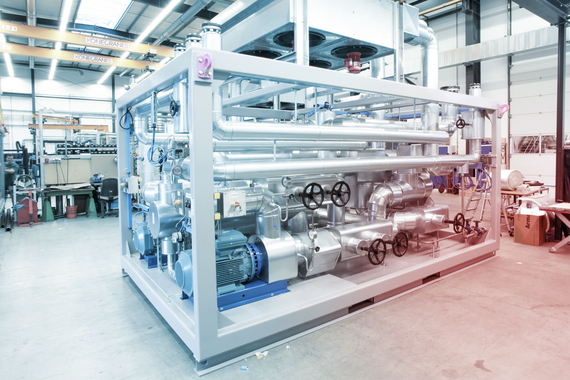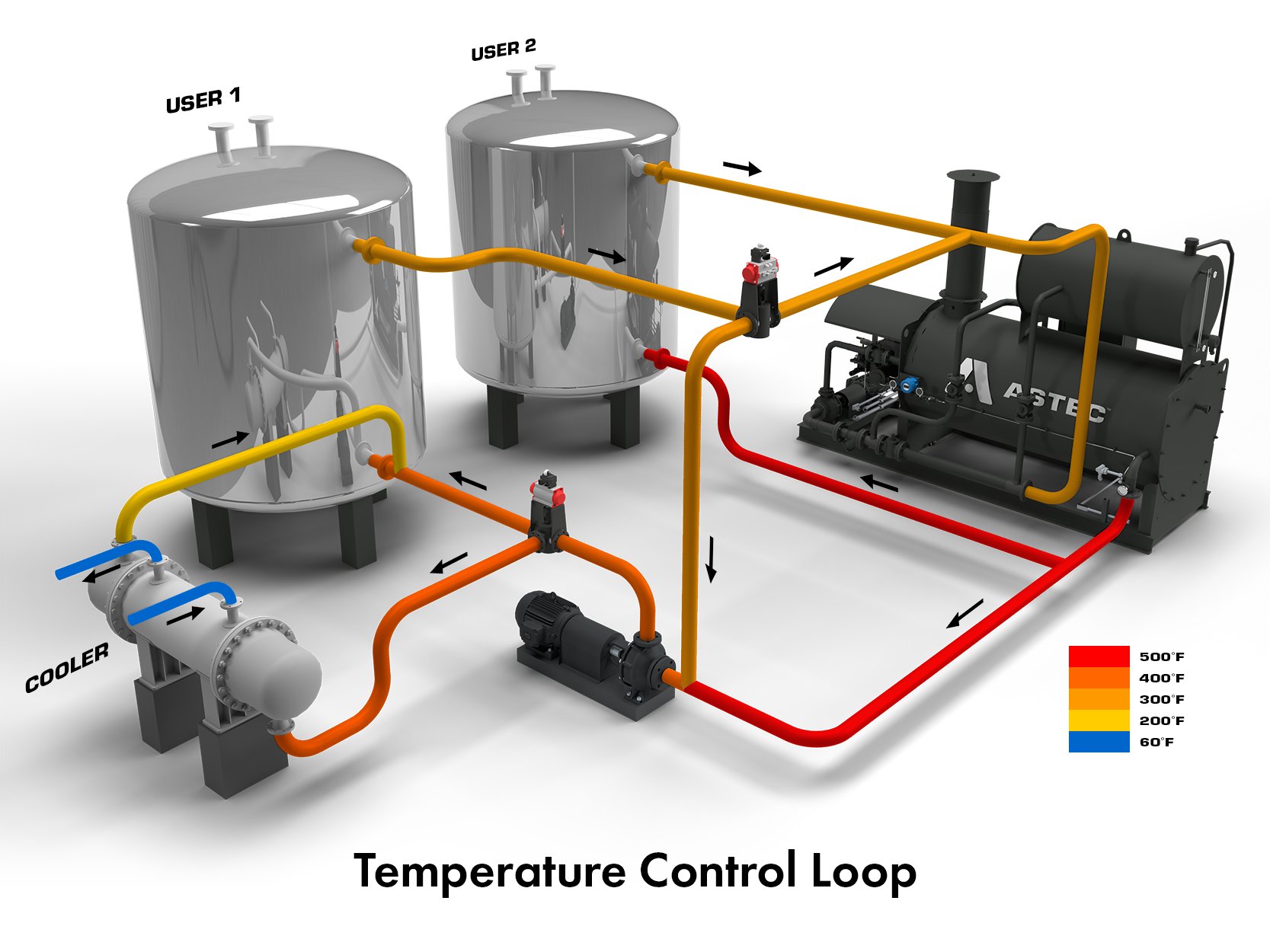A Comprehensive Overview to Choosing the Right Heat Transfer Systems for Your Requirements
Picking the proper Heat transfer system is vital for operational efficiency. Various systems satisfy different needs, affected by factors such as temperature level range and liquid kind. Comprehending the principles behind Heat transfer, such as radiation, conduction, and convection, is essential. Additionally, reviewing energy sources and upkeep techniques can affect long-lasting efficiency. A closer assessment of these considerations discloses exactly how to tailor a system to details needs. What should one prioritize in this complex decision-making procedure?
Recognizing Heat Transfer: Key Principles and Principles
Although Heat transfer may look like an uncomplicated idea, it encompasses an array of principles that are fundamental for efficient system design. Understanding these principles is important for developers and designers who aim to maximize thermal efficiency in numerous applications. Conduction, for example, includes the transfer of Heat through solid materials, while convection describes the movement of Heat within fluids. Radiation, another vital concept, describes exactly how Heat can be transferred through electro-magnetic waves. Each of these devices plays a crucial duty in determining exactly how power relocates within a system. By extensively comprehending these concepts, experts can make educated decisions, making certain that Heat transfer systems operate effectively and fulfill the details demands of their applications
Types of Heat Transfer Equipments: A Summary
Comprehending the principles of Heat transfer prepares for checking out the different kinds of Heat transfer systems available. Heat transfer systems can be classified mainly into three types: convection, radiation, and transmission. Transmission involves Heat transfer with strong products, depending on direct contact in between particles. Convection, on the other hand, occurs in liquids (gases and fluids) where the activity of the liquid itself helps with Heat transfer. Radiation includes the transfer of Heat via electromagnetic waves and does not call for a medium, allowing it to happen in a vacuum cleaner. Each kind of system has distinctive features and applications, making it vital for people and companies to carefully assess their certain needs when selecting one of the most suitable Heat transfer remedy.
Applications of Heat Transfer Systems in Various Industries
Heat transfer systems play a vital role across numerous industries, influencing effectiveness and product quality. In industrial production processes, they assist in exact temperature control, while in food and drink handling, they guarantee security and preservation. Additionally, cooling and heating and climate control systems count greatly on effective Heat transfer to maintain comfortable environments.
Industrial Production Processes

Countless commercial production procedures depend greatly on reliable Heat transfer systems to optimize efficiency and enhance product high quality. In markets such as metalworking, Heat exchangers play a vital duty in keeping optimal temperature levels throughout welding, casting, and creating. These systems ensure consistent Heat distribution, which is vital for achieving preferred product residential or commercial properties. In a similar way, in the chemical manufacturing sector, Heat transfer systems promote specific temperature level control throughout responses, influencing yield and safety and security. In fabric manufacturing, efficient Heat management is crucial for dyeing and finishing procedures, affecting shade consistency and fabric high quality. By choosing appropriate Heat transfer innovations, makers can boost energy efficiency and reduce functional expenses, ultimately leading to an extra competitive and lasting production setting.
Food and Drink Processing
Reliable Heat transfer systems are equally important in the food and drink processing industry, where keeping suitable temperature levels is critical for food safety and security and high quality. These systems play an important role in procedures such as sanitation, pasteurization, and food preparation, making certain that products are risk-free for usage and maintain their nutritional value. Heat exchangers, as an example, efficiently move Heat between liquids, optimizing power use while lessening temperature level variations. Furthermore, refrigeration systems are essential for protecting perishable products and extending life span. The choice of Heat transfer technology straight influences functional effectiveness and item integrity, making it necessary for food and drink manufacturers to choose the ideal systems customized to their specific handling demands. This mindful choice inevitably adds to consumer complete satisfaction and food safety and security.

Cooling And Heating and Environment Control
While many sectors rely upon Heat transfer systems for performance, HEATING AND COOLING (Heating, Air Flow, and A/c) plays an important role in keeping indoor environment control throughout different settings. These systems use Heat transfer concepts to manage moisture, air, and temperature level high quality, guaranteeing comfort and safety and security in domestic, commercial, and industrial atmospheres. Properly made heating and cooling systems improve power efficiency, minimize functional prices, and minimize environmental influence. In business buildings, as an example, reliable environment control adds to worker performance and customer complete satisfaction. In industrial applications, HVAC systems help maintain suitable problems for equipment operation and product preservation. Choosing the right Heat transfer system is essential for conference particular climate control demands and achieving overall system performance.
Reviewing Power Resources for Heat Transfer Solutions
In examining power resources for Heat transfer systems, a comparison of renewable resource options and nonrenewable fuel source considerations is necessary. Eco-friendly resources, such as solar and wind, offer sustainable options that can reduce environmental impact. Conversely, nonrenewable fuel sources remain widespread due to their recognized facilities and energy thickness, triggering a cautious evaluation of both alternatives.
Renewable Power Options

Fossil Fuel Factors To Consider
Assessing fossil fuel factors to consider is necessary for the effectiveness and sustainability of Heat transfer systems. Nonrenewable fuel sources, such as gas, oil, and coal, are traditional power sources that provide significant Heat result, making them popular selections for household and industrial applications. Their environmental influence, consisting of greenhouse gas exhausts and source depletion, increases problems. When selecting a warmth transfer system, it is crucial to examine the accessibility, expense, and regulatory variables connected with these gas. In addition, the efficiency of nonrenewable fuel source systems must be considered, as greater performance can minimize some environmental disadvantages. Eventually, a well balanced technique evaluating performance and sustainability can direct decision-makers towards the most ideal Heat transfer option for their details requirements.
Elements to Take Into Consideration When Selecting a Heat Transfer System
Selecting a suitable Heat transfer system calls for careful consideration of various variables that can significantly impact effectiveness and efficiency. One essential factor is the operating temperature range, which determines the products and layout suitable for the application. Additionally, the sort of liquid made use of in the system-- whether gas or liquid-- influences Heat transfer effectiveness and compatibility. The system's size and ability have to straighten with the specific needs of the operation to prevent ineffectiveness. Power source availability is also vital, affecting operating expense and sustainability. The installation setting, including area restraints and accessibility for maintenance, plays a considerable role in system choice. Ultimately, governing conformity and security standards should be thought about to ensure the system meets all legal needs.
Upkeep and Efficiency Optimization for Heat Transfer Solutions
Keeping Heat transfer systems is essential for guaranteeing optimal effectiveness and longevity. Regular maintenance tasks, such as cleaning up Heat exchangers and checking insulation, help protect against performance losses because of fouling and thermal bridging. Furthermore, monitoring system criteria, consisting of stress and temperature, permits very early discovery of abnormalities, lessening downtime and expensive fixings. Applying a preventative upkeep routine can enhance efficiency and prolong the life expectancy of components. Updating to sophisticated control systems can enhance operational efficiency by adjusting to differing problems and loads. By prioritizing upkeep and efficiency optimization, operators can attain lowered power consumption, reduced functional expenses, and boosted general system integrity, eventually bring about much better source use and a much more sustainable procedure.
Future Trends in Heat Transfer Technologies
As industries significantly prioritize sustainability and power effectiveness, future trends in Heat transfer technologies are readied to undergo significant makeovers. Developments such as sophisticated materials, including carbon nanotubes and nanofluids, guarantee boosted thermal conductivity and performance. Furthermore, the assimilation of sustainable power resources right into Heat transfer systems is getting energy, advertising environmentally friendly services. Smart technologies, consisting of IoT sensing units, are anticipated to revolutionize tracking and control, allowing real-time information analysis for Resources optimized efficiency. The growth try here of modular and compact systems will certainly promote less complicated setup and upkeep, catering to varied applications. These developments indicate a shift towards more lasting, effective, and versatile Heat transfer services, aligning with international power goals and environmental requirements.
Regularly Asked Concerns
What Are the Ecological Influences of Heat Transfer Systems?
The environmental influences of Heat transfer systems can include greenhouse gas emissions, energy usage, and prospective thermal pollution. Furthermore, improper disposal of materials and inadequacies can add to source exhaustion and community disturbance.
How Do I Compute the Cost-Effectiveness of a Warm Transfer System?
To determine the cost-effectiveness of a warmth transfer system, one should assess preliminary prices, operational expenses, upkeep needs, and power effectiveness, contrasting these factors against the expected life-span and efficiency of the system.
Can Heat Transfer Equipment Be Made Use Of in Residential Setups?
Heat transfer systems can undoubtedly be made use of in domestic settings. They offer efficient home heating and cooling options, making homes extra comfy while possibly decreasing power prices. Their flexibility enables different applications in property environments.
What Security Regulations Apply to Heat Transfer Equipments?
Security guidelines for Heat transfer systems usually consist of guidelines on procedure, setup, and upkeep. Compliance with local building codes, supplier specifications, and market standards is vital to ensure safe and effective system performance in different applications.
How Do Various Products Affect Heat Transfer Performance?

Conduction, for circumstances, involves the transfer of Heat via strong materials, while convection refers to the motion of Heat within liquids. Understanding try this website the concepts of Heat transfer lays the groundwork for discovering the various kinds of Heat transfer systems available. Heat exchangers, for instance, efficiently transfer Heat in between liquids, optimizing power usage while reducing temperature level changes. In assessing power resources for Heat transfer systems, a comparison of eco-friendly power choices and fossil fuel considerations is crucial. Steels, such as copper and light weight aluminum, conduct Heat effectively, whereas insulators like rubber and glass reduce down Heat flow.